16 Best Practices for Crafting Effective CTAs Emai to Boost Sales
Almost 64% of email recipients open or delete an email based on its subject line.
This surprising statistic shows the crucial importance of a captivating beginning.
Yet, crafting a captivating subject line is only half the battle. The real challenge lies in transforming those email opens into conversions. For that, you must have a strong CTA.
In this blog, we’ll share 16 simple tricks that make your CTAs more effective, helping people act on their curiosity. Learn how powerful words, psychological cues, and intelligent designs can change unsure clicks into certain sales.
After reading this, you’ll know how to make CTAs that get noticed and boost sales.
Let’s start this journey to change how you do email marketing for great results.
Table of Content
- What Is A Call To Action (CTA) In An Email?
- Why Is A Call To Action Important?
- How Does Email CTA Work?
- The Principle of Commitment
- The Principle of Reciprocity
- Best Practices for Writing Email CTAs
- Personalize your CTAs
- Be very Concise
- Use a contrasting color for your CTA
- Use a button for your CTA
- Consider the Placement of CTA
- Provide a Calendar Link
- Reiterate your Value Proposition in the CTA
- Request a Connection
- Request a free demo
- Ask a Simple Yes/ No Confirmation Question
- Ask an Open-Ended Question
- Add Humor
- Add some Urgency
- A/B test your call to action
- Mistakes You’re Making in Your Sales Email CTAs
- Sales Email CTA Templates
- Craft The Best CTAs And Increase Sales
- FAQs
What Is A Call To Action (CTA) In An Email?
In emails, a call to action is crucial and helps guide recipients. It is a prompt or a directive that aims to help people perform a particular action.
CTAs’ advice not only interests people but also leads to real results like deals and sign-ups. CTAs help users by providing clear focus and smoother navigation for digital content.
Moreover, CTAs provide a quantifiable advantage. Businesses can analyze user responses to make better decisions and improve strategies.
Crafted CTAs contribute to brand awareness. They assist in expanding the brand’s reach and connecting with a larger audience.
CTAs are crucial in cold emailing. They shape online behavior, fostering meaningful interactions that fuel business expansion and growth.
Why Is A Call To Action Important?
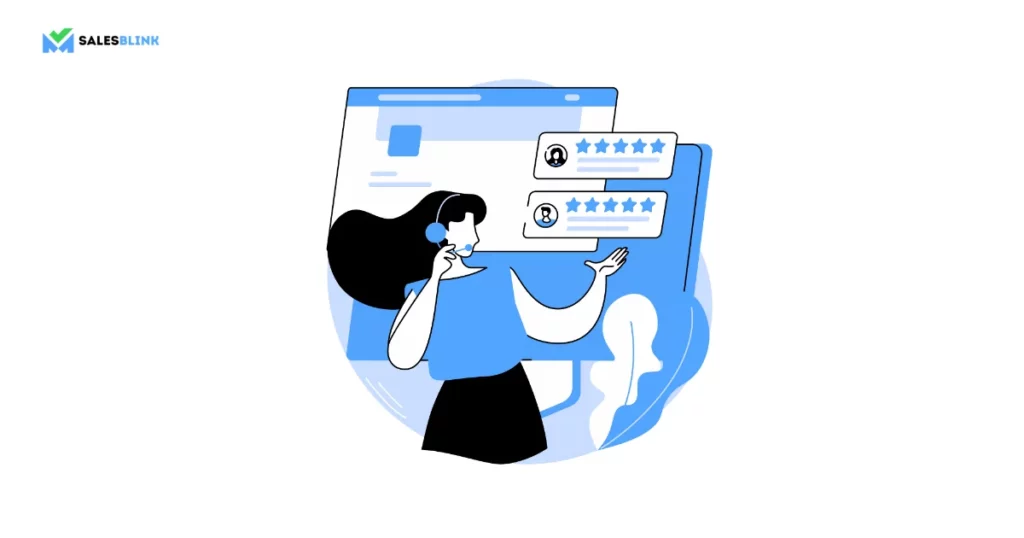
Here’s why a CTA is important:
1. Clear Instruction
A clear CTA doesn’t leave room for confusion. It clearly communicates what action the recipient should take next. Whether it’s directing them to purchase a product, sign up for a service, or explore more information, clarity is crucial. It eliminates guesswork, ensuring that the reader understands precisely what step to take after reading the email.
2. Clickable Button or Link
An effective CTA doesn’t just tell the recipient what to do; it provides a direct pathway for them to take that action. Incorporating clickable buttons or hyperlinks seamlessly integrates the call to action within the email, simplifying the process for the reader to respond promptly with a single click.
3. Encourages Response
The ultimate goal of a CTA is to prompt a response from the recipient. It aims to move them from being passive readers to active participants, driving them towards making a purchase, signing up for a newsletter, or engaging with the brand in a meaningful way.
4. Creates Urgency
A compelling CTA often incorporates persuasive language that instills a sense of urgency. This urgency might stem from limited-time offers, exclusive deals, or impending deadlines, allowing the reader to act promptly to seize the opportunity presented in the email.
5. Action-Oriented
CTAs employ action-oriented language, utilizing verbs that encourage immediate engagement. By using phrases like “Get Started,” “Claim Your Discount,” or “Discover Now,” they motivate the reader to take the desired action without delay.
6. Highlights Benefits
Effective CTAs emphasize the benefits or value the recipient stands to gain by heeding the call to action. Whether it’s highlighting savings, access to exclusive content, or solving a problem, focusing on benefits makes the action more appealing and relevant to the reader’s needs.
7. Visually Stand Out
CTAs are designed to catch the reader’s eye amidst the rest of the email content. They often employ visually striking elements such as contrasting colors, bold fonts, or compelling graphics to ensure they stand out and attract immediate attention.
8. Tailored to Audience
Successful CTAs resonate with the specific interests and preferences of the target audience. They align with the reader’s needs and motivations, making the email content feel personalized and significantly increasing the likelihood of a response.
9. Guides Customer Journey
A well-crafted CTA plays a pivotal role in guiding potential customers through their journey, from initial interest to taking concrete action. It’s a stepping stone that navigates individuals towards making purchases, signing up, or engaging further with the brand, ultimately contributing to conversions and achieving marketing objectives.
How Does CTA Email Work?
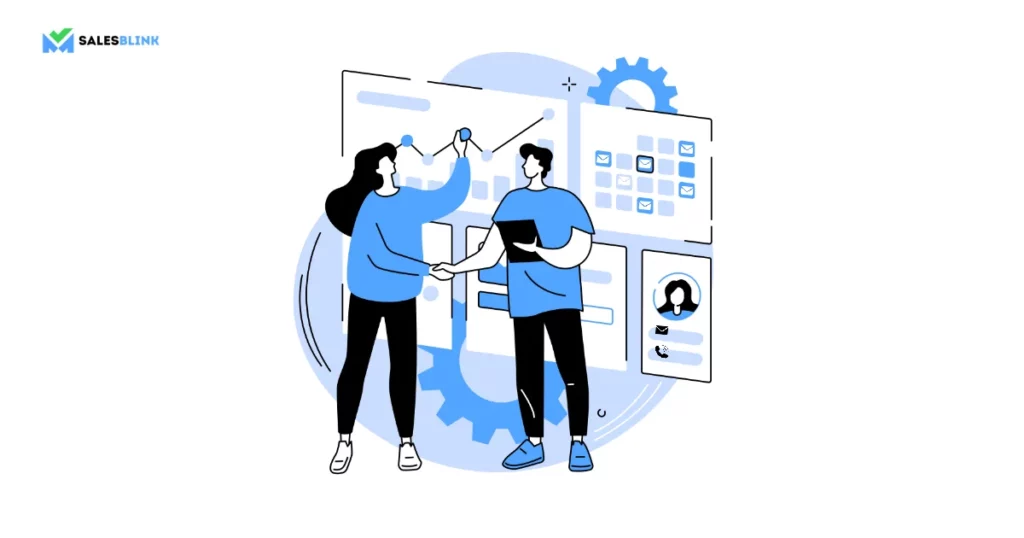
The CTA uses clear language, urging the reader to do something specific, such as buying, subscribing, or visiting a website.
CTAs use tricks like urgency or special offers to make people act.
They capitalize on the reader’s curiosity, encouraging them to explore further. Where you put CTAs in an email is essential. They’re usually placed so you can see them without crowding the email.
Moreover, CTAs are often tailored to match the context of the email.
In a sales email, there might be a button saying “Book a demo,” and in a newsletter, there could be a link inviting readers to “Read More” for more information.
Email marketing platforms track CTA engagement, providing valuable data to sales teams. Numbers like click rates show which CTAs work. This helps sales teams improve their methods and make emails more engaging in the future.
The Principle of Commitment
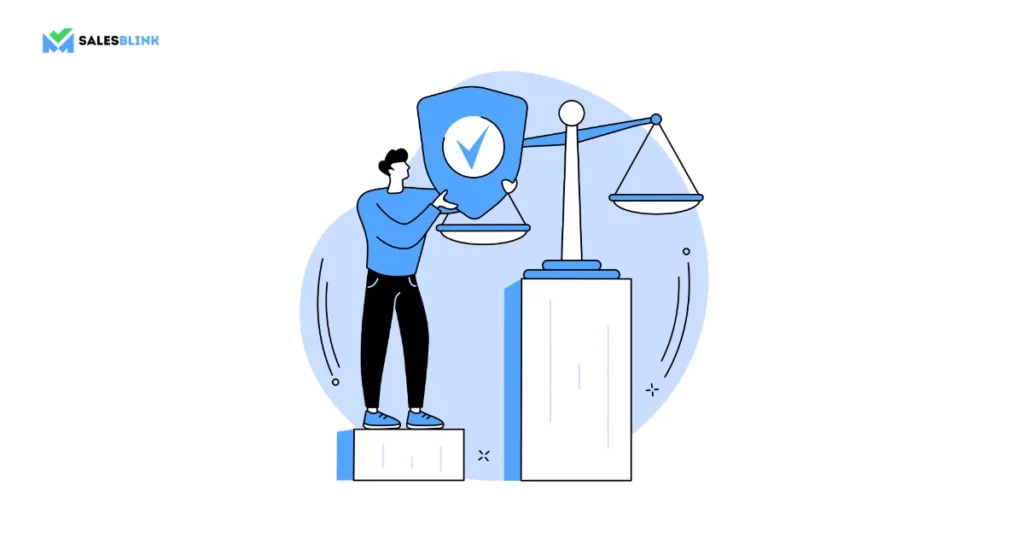
The Commitment Principle says agreeing to small things increases the likelihood of doing more significant related actions later.
It highlights the influence of initial commitments in shaping behavior over time.
This principle, emphasizing the consistency of behavior, originates from human psychology.
When people commit to small things, such as signing up for a newsletter, they see themselves in a way that matches that commitment.
As a result, they are more inclined to engage in behaviors that match this self-image, leading to more significant commitments or actions in the future.
This principle emphasizes the need for loyalty and consistency. Small commitments lead to long-lasting customer relationships and ongoing engagement.
You can use the Commitment Principle in CTAs to shape prospect behavior and enhance sales. This principle also helps establish enduring customer relationships.
The Principle of Reciprocity
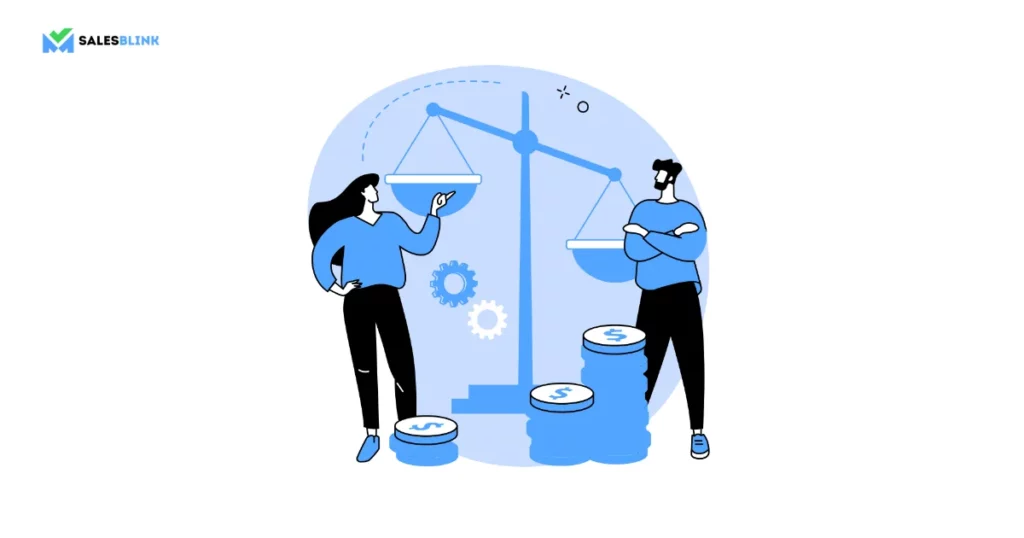
The Reciprocity Principle is about people returning kindness. When someone is nice, others tend to be nice back.
In simpler terms, when someone does something nice, we must reciprocate the kindness.
Human interactions and social norms embed this principle.
In business and marketing, the Principle of Reciprocity is a powerful tool.
When you offer something without expecting immediate returns, it makes customers feel obligated to reciprocate with something in return. This reciprocity fosters positive relationships and customer loyalty.
Prospects may respond by acting upon the CTA, reciprocating the kindness shown. They might also spread the business to others as a form of reciprocity.
Understanding this principle is vital in building positive relationships with prospects.
By providing genuine value and demonstrating goodwill, businesses can create a sense of loyalty along with their audience.
Reciprocal actions build a strong bond between businesses and customers, encouraging repeat business and long-term engagement.
The Reciprocity Principle shows that when businesses are kind and generous, people usually respond.
This creates a cycle of goodwill and mutual benefit between the sales rep & prospects.
Best Practices for Writing Email CTAs
Following are some best practices an individual could opt for writing email CTA’s:
1. Personalize your CTAs
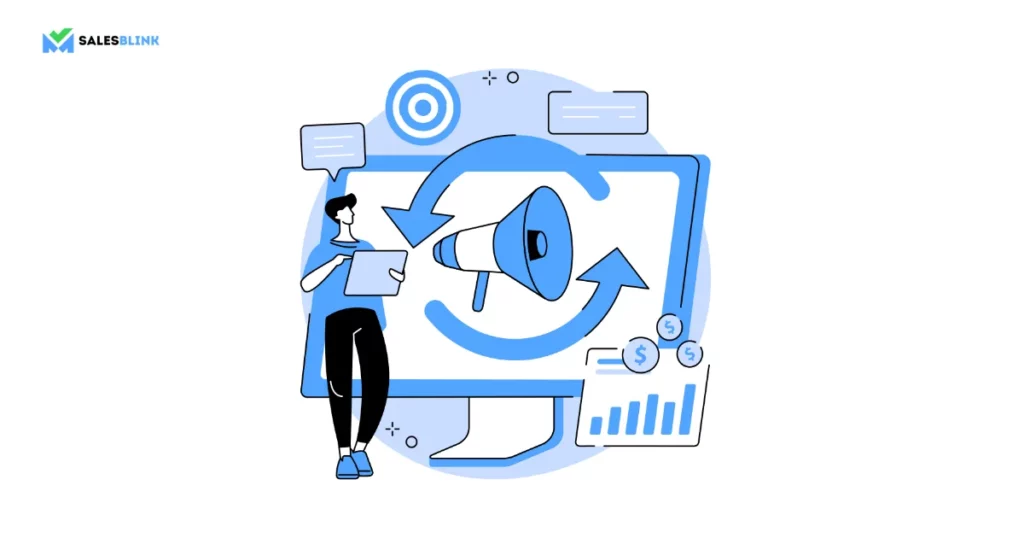
Personalization in CTAs tailors messages to individuals, creating a unique and relatable experience.
Using a customer’s name or mentioning their previous interactions shows you understand what they need.
Recognizing their preferences creates a personal link and a personal touch, making them feel important.
Personalized CTAs reflect your effort to know prospects, building a positive connection that prompts them to act.
2. Be very Concise

Clear and brief CTAs make the message easy to understand, avoiding confusion and prompting quick action.
Long-winded phrases can overwhelm readers and dilute the impact of your message. Whereas, understandable, concise CTAs prompt recipients to act immediately without hesitation.
By simplifying your message, you respect the reader’s time and attention, making it more likely for them to engage with your CTA.
3. Use a contrasting color for your CTA
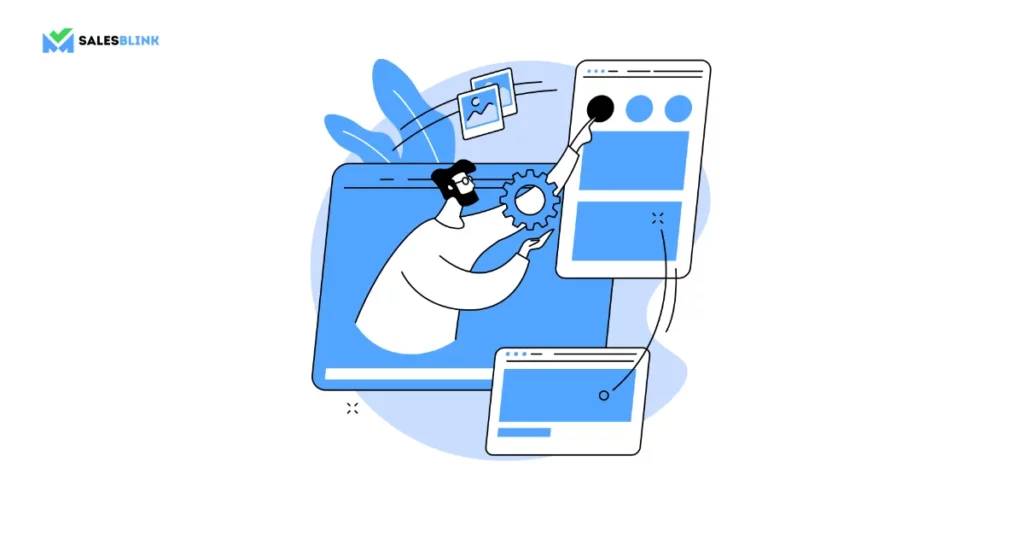
Utilizing contrasting colors ensures that your CTA stands out within the email.
Vibrant hues against a neutral background create visual emphasis, guiding the reader’s focus to the action button. This stark contrast grabs attention immediately, increasing the likelihood of interaction.
The strategic use of color enhances the visual hierarchy of your email, making it easy for the recipient to identify the primary call to action.
4. Use a button for your CTA
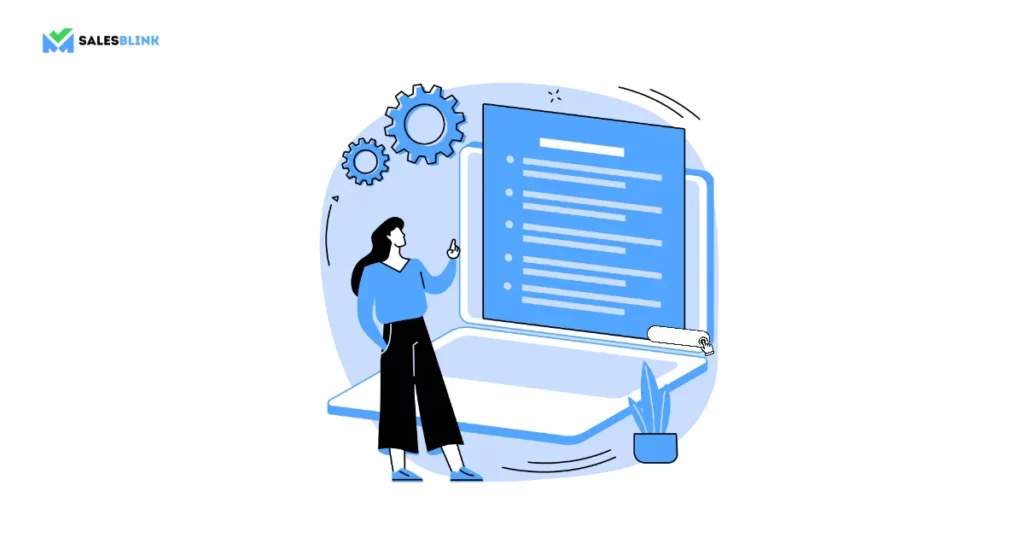
Buttons in CTAs provide a transparent, clickable element that prompts action. Their design, often distinct from the email’s text, draws the reader’s attention.
Place well-designed buttons within the email to enhance the user experience. Their visual appeal and interactive nature encourage clicks, making them superior to text links.
Well-placed buttons give a straightforward way to click, guiding users where to interact.
This strategic placement leads to higher click-through rates and increased engagement.
5. Consider the Placement of CTA

The placement of your CTA within the email is pivotal to its effectiveness.
Positioning it above the email’s fold ensures immediate visibility without scrolling.
Trying different email placements (start, middle, or end) helps you see which gets the most attention and clicks. Overall, careful placement boosts engagement, guiding readers from the email to the desired action.
6. Provide a Calendar Link
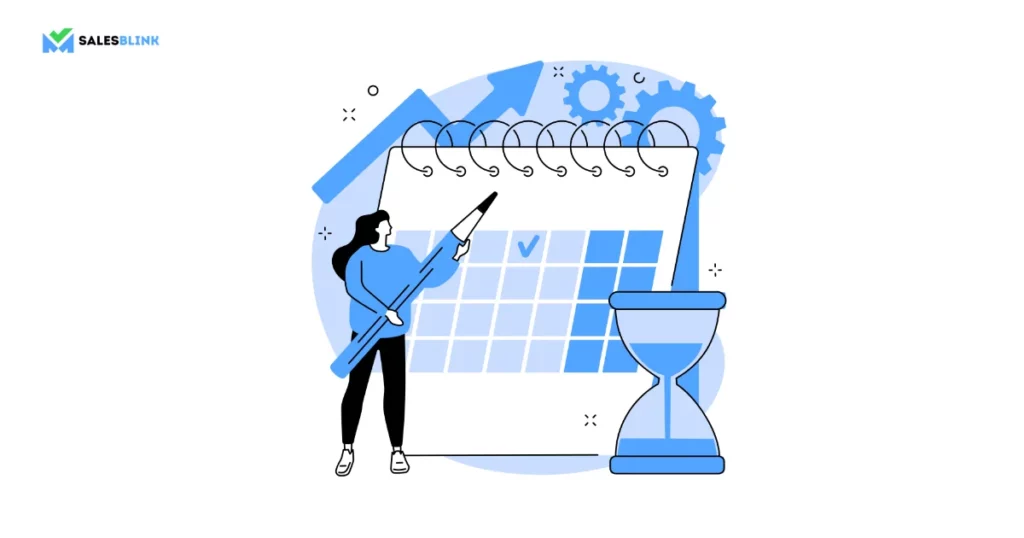
Including a direct calendar link simplifies the scheduling process for the recipient. By eliminating unnecessary steps, such as manual entry, you enhance customer convenience.
A calendar link helps people set appointments or reminders, making it easier for them to engage. Clicking the link and confirming appointments streamlines the process, encouraging more interactions. Direct calendar integration saves time and makes it simpler for customers to commit to appointments or events.
7. Reiterate your Value Proposition in the CTA

Highlight your brand’s unique benefits in your call to action to show prospects why they should choose you. It expresses how the specified action will enhance their experience or solve their problem.
By highlighting the direct advantages of the action, you provide a compelling reason for the recipient to engage.
Repeating the value proposition in your call to action reminds customers of the benefits they’ll get, making them more likely to act.
8. Request a Connection

Inviting customers to connect on social media creates a sense of community and belonging. Personalizing the invitation by explaining the mutual benefits builds a stronger bond. Social connections build brand loyalty, transforming casual customers into dedicated advocates.
Emphasizing the benefits of connecting with your brand makes people more likely to engage and build a stronger relationship with you.
Sending personalized invitations shows people that you care about them, making them more likely to connect, interact with your brand, and become active members of your social community.
9. Request a free demo
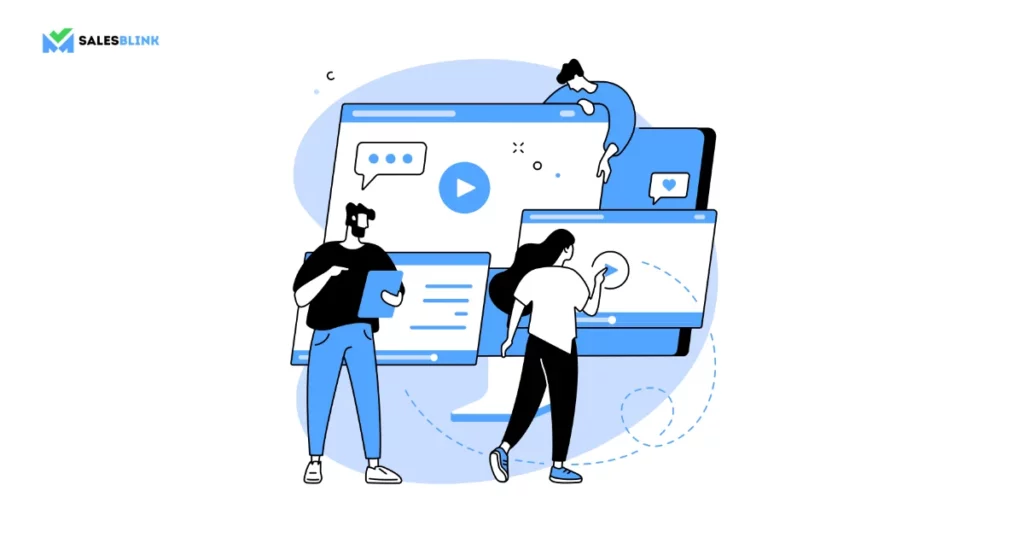
Offering a free demo lets customers try your product or service without risk.
The word “free” makes it more likely that people will try your product or service.
Demos show customers what your product or service can do, making them more interested and knowledgeable.
Inviting people to request a free demo gives them a hands-on experience, making your product or service more accurate and appealing.
Trying before buying builds trust, making it more likely that people will continue to engage with your brand.
Free demos act as a preview, enticing customers to explore your product or service, driving them to click and start the trial.
10. Ask a Simple Yes/ No Confirmation Question
Including a direct yes/no question within your CTA simplifies the decision-making process for the recipient.
By making the question relevant to the desired action, you ensure clarity. Precise queries guide customers towards quick, affirmative responses, eliminating ambiguity.
These simple questions prompt immediate decisions, streamlining the interaction process.
Make it easy for people to respond to your call to action by simplifying the language and clarifying what you want them to do.
Yes/no questions are a quick and easy way for customers to show what they want, leading them toward the next step without confusion.
11. Ask an Open-Ended Question
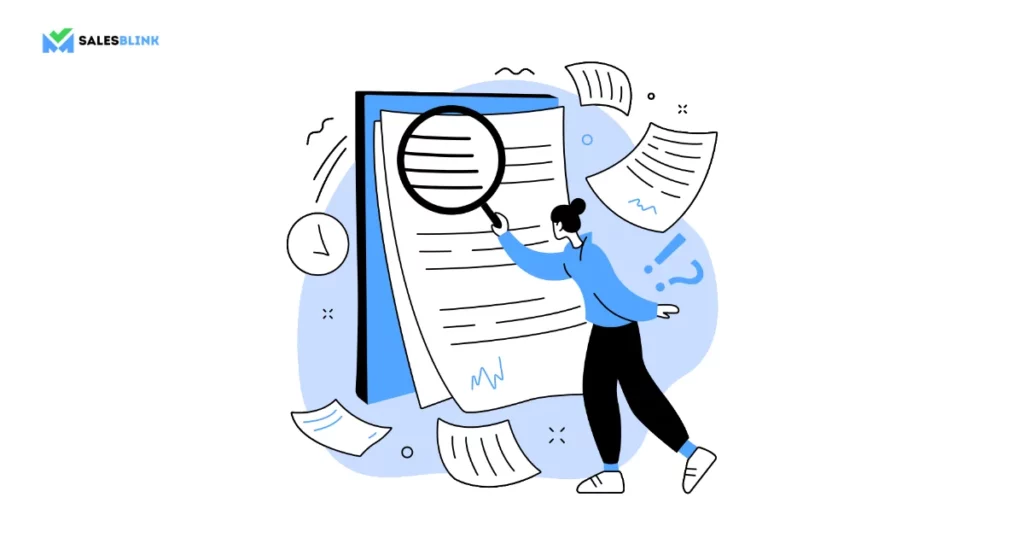
Incorporating open-ended questions within your CTA encourages dialogue and prospect engagement.
Inquiring about prospect needs, opinions, or preferences shows genuine interest in their perspective. Their responses provide valuable insights, enabling personalized follow-ups and strengthening relationships.
By inviting prospects to share their thoughts, you create a two-way conversation, fostering a sense of partnership. Open-ended questions encourage recipients to express themselves, making them feel heard and valued.
These questions turn your call to action into a way to start honest conversations with customers, helping you build stronger relationships beyond the first click.
12. Add Humor
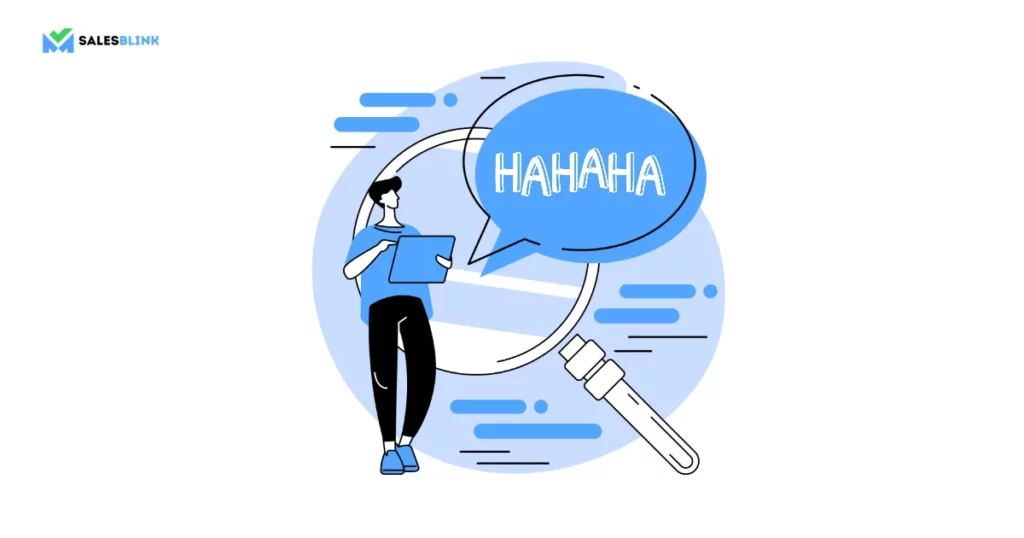
Infusing humor into your CTA adds a personal touch, making your brand memorable and relatable. Aligning the spirit with your audience’s preferences ensures relevance and resonance.
Light-heartedness creates a positive emotional connection, enhancing customer rapport. Humorous CTAs evoke smiles and positive emotions, associating your brand with enjoyable experiences.
By incorporating humor, you break the ice, making the interaction more enjoyable and engaging. Entertaining content captures attention, encouraging recipients to read and respond.
Humor creates a unique brand identity, separating your communication and making customers more inclined to click and explore further.
13. Add some Urgency
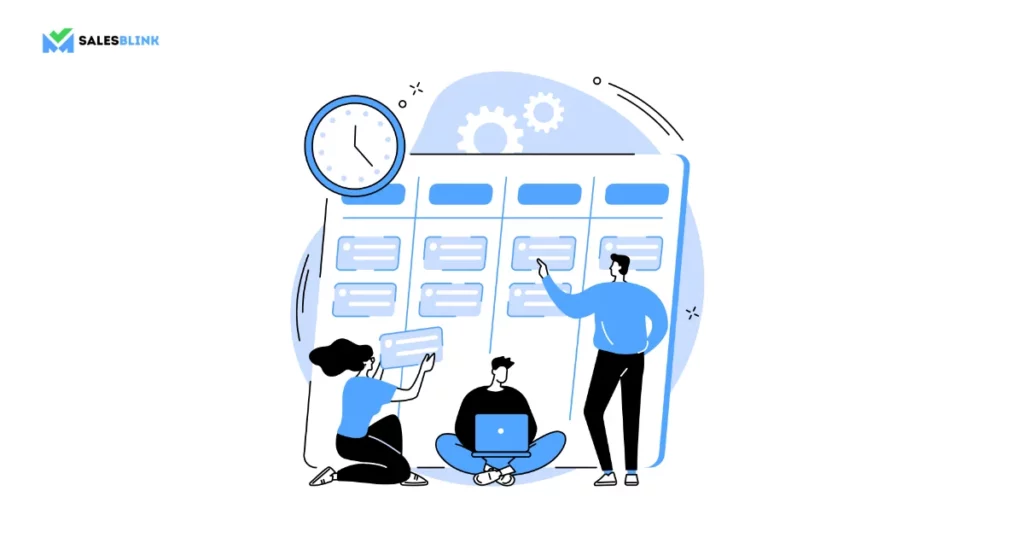
Adding urgency to your CTA language compels immediate action from the recipient. Highlighting limited-time offers or exclusive deals creates a sense of scarcity and immediacy.
Creating a sense of urgency makes customers want to act now so they don’t miss out on good things. Using urgent language makes prospects afraid of missing out, so they click and engage before it is too late.
By highlighting the fact that the offer is time-limited, you get people to make quick decisions, which makes them more excited and eager to take part.
Urgency makes people respond, turning potential customers into active participants, which increases conversions.
14. A/B test your call to action
A/B testing involves experimenting with different CTAs to analyze their effectiveness and optimize customer responses.
By varying language, color schemes, placement, and wording, you gain valuable insights into prospect preferences.
Testing allows one to identify the most compelling CTA elements that resonate with your audience. These insights enable you to refine your approach, tailoring CTAs for the most impact and conversions.
Analyzing customer responses allows you to make informed decisions and optimize your CTAs to drive engagement and achieve desired outcomes.
Mistakes You’re Making in Your Sales Email CTAs
Here are a few common mistakes you might be making with email CTAs:
1. You Don’t Have a CTA
When your sales email needs a clear CTA, it becomes a heap of information with a defined next step. To increase your chances of converting leads, state what action you want them to take. When there isn’t a clear directive, the message doesn’t have an impact. This makes the recipient unsure about what to do next.
2. You Have Too Many Different CTAs
Having an array of CTAs can overwhelm your recipient, making it less likely for them to take any action at all. Providing too many choices weakens the main action and makes decision-making harder. This confusion makes it hard for them to figure out the most important thing to do from your message.
3. Your CTA is Unclear
When a CTA is not clear, the recipient is unsure what action you want them to take. To make sure the recipient understands your CTA button, explain its benefits. Clarity and incentive are crucial in guiding recipients towards clicking on your CTA.
4. Your CTA is Asking for Too Much
If you ask for too much from someone too soon, they might push you away and not take any action. Overwhelming the person and seeming demanding can harm your new relationship. Balancing the request is key to fostering a positive interaction and encouraging follow-through.
Sales Email CTA Templates
1. CTA Template 1: Schedule a demo
Subject: Schedule a demo of {{product name}} today and see how it can help you {{solve a customer problem}}.
Body:
Hi {{prospect name}},
Are you looking for a way to {{solve a customer problem}}?
{{Product name}} can help you do that. It’s a {{brief description of product benefits}}.
I’d love to show you how {{product name}} can help your business achieve its goals. Schedule a demo today and see for yourself.
CTA:
{{Button}} Schedule a demo
2. CTA Template 2: Download a free trial
Subject: Download a free trial of {{product name}} and start boosting your {{metric}} today!
Body:
Hi {{prospect name}},
Do you want to see how to boost your {{metric}} with {{product name}}?
Download a free trial today and start using {{product name}} to:
{{List of product benefits}}
There’s no obligation, and you can cancel at any time.
CTA:
{{Button}} Download a free trial
3. CTA Template 3: Get a quote
Subject: Get a personalized quote for {{product name}} today!
Body:
Hi {{prospect name}},
Are you interested in learning more about how {{product name}} can help your business?
Get a personalized quote today and see how much it would cost to install {{product name}} in your company.
We’ll work with you to create custom solutions that meet your needs and budget.
CTA:
{{Button}} Get a quote
4. CTA Template 4: Sign up for a webinar
Subject: Learn how {{product name}} can help you {{solve a customer problem}} at our upcoming webinar!
Body:
Hi {{prospect name}},
Are you looking for a way to {{solve a customer problem}}?
Join us for a webinar to learn how {{product name}} can help.
During the webinar, we’ll cover:
{{List of webinar topics}}
We’ll also be answering your questions live.
Sign up for the webinar today and reserve your spot!
CTA:
{{Button}} Sign up for the webinar
5. CTA Template 5: Talk to a sales rep
Subject: Talk to a sales rep about how {{product name}} can help you achieve your goals.
Body:
Hi {{prospect name}},
Do you have any questions about {{product name}} or how it can help your business?
Talk to a sales rep today and get personalized answers.
Our sales reps are experts in {{product name}} and can help you choose the right plan for your needs.
CTA:
{{Button}} Talk to a sales rep
Craft The Best CTAs And Increase Sales
Crafting effective email CTAs is an art that combines strategic positioning, compelling language, and visual appeal to drive engagement and boost sales. Following these 16 best practices, you can significantly enhance the impact of your cold email campaigns.
Remember, you have to guide your audience smoothly towards the desired action. Therefore, keep your CTAs clear, concise, and relevant to your audience’s interests and needs. With consistent effort and refinement, your email CTAs can become powerful tools in converting prospects into loyal customers and driving your business’s success.
Follow the best practices we mentioned and create compelling CTAs that drive conversions, improve relationships, and boost sales.
You can thank us later!
FAQs
1. What are CTAs in email?
A call to action (CTA) is a text or button that tells the reader to do something specific. For example, visit a website, sign up for a newsletter, or make a purchase.
2. How do I create an email CTA?
To create an email CTA, make sure it is:
Clear and concise: Tell the reader exactly what you want them to do. Actionable: Use strong verbs and make it easy for the reader to click or tap. Relevant: Tailor the CTA to the specific email and audience. Urgent: Create a sense of urgency to drive the reader to act now.
3. How many CTAs should an email have?
Only include one primary CTA in each email. Too many CTAs can confuse the reader and make them less likely to take any action.







